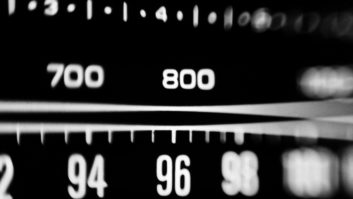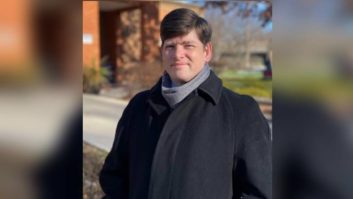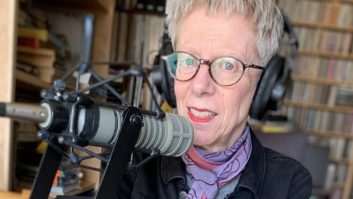
credit: iStockphoto/Shaun Lowe We are pleased to see attention being paid to the question of what changes might be made in radio regulation to enable AM broadcasters to plan for a future. We believe that AM radio is being held back from realizing its best uses, now and in the future, by long-obsolete technical regulations.
As consulting engineers, AM radio station owners rely on us for studies on how their facilities can continue to operate when they are forced to move transmitter sites and, sometimes, how their coverage can be improved with antenna system changes.
In this capacity, we can see how the present technical rules of the FCC impair, rather than assist, AM radio in remaining relevant while filling roles where its service will be needed in the ever more diverse technological marketplace of the future.
Dated principles
The present rules, we believe, are based on principles that may have reflected the situation in the 1920s and 1930s, when AM radio was the only over-the-air electronic medium, communities consisted of centered population areas, rural areas were sparsely populated and man-made noise levels were low. But they fall short of what is needed today.
Our rules have their roots in a time when an AM radio station provided one of only a few sources — if not the only one — of electronic entertainment and information within its coverage area. Most AM licenses were valuable business franchises. It was the FCC’s job to see to it that as many communities as possible were served by them as well as possible.
Now, AM radio is but one of a multitude of electronic options for its potential listeners, and most stations are in survival mode searching for audiences to serve with at least modest profitability.
There is more. The rules have been changed over the years with the focus on reducing interference between stations instead of improving coverage. But now AM stations are in “straightjackets” imposed to restrict stations from interfering with each other but that instead severely limit their ability to improve coverage or to make transmitter site changes.
Typical case
We see examples of how AM broadcasters are hampered in providing service by obsolete rules all the time, when AM stations are forced to move.
A typical situation arises when an AM station loses the lease on the transmitter site it has occupied for decades and comes to one of us wishing to build a new site more centrally located for its listeners (often minority and/or foreign language speakers).
We have to make them face the reality that the station’s power must be reduced to avoid increasing “grandfathered” signal overlap with other stations. A tower of the height that can be approved for a building permit locally will not meet the FCC’s minimum efficiency requirements. The city of license will have to change because coverage requirements of the rules cannot be met for the present one.
And, to make matters worse, the city of license change is going to be difficult, if not impossible, because it will be caught in the “net” put in place to stop FM stations from moving out of rural communities closer to large cities — a situation nothing at all like what the AM station needs to do.
Dealing with the unnecessary requirements makes lots of expensive work for consulting engineers, too. We would like to be able to provide the services that are really needed for the survival of AM radio stations for much lower costs than are possible in the present regulatory environment.
Our suggestions
There needs to be a totally fresh look at what the AM radio technical rules should be, taking into account the flexibility stations require to best serve the population segments they desire in the expanding universe of electronic media.
We suggest:
• Eliminating the city of license coverage requirements to allow stations to use a marketplace approach to providing service to their actual audiences;
• Eliminating antenna minimum efficiency requirements to allow stations flexibility in tower height as long as the maximum radiated field can be known for the actual transmitter power;
• Eliminating the minimum ground system requirements for AM antennas to allow stations flexibility in choosing new transmitter sites when they have to move;
• Increasing the daytime protected contour level from 0.5 mV/m to a higher value more representative of man-made noise levels to allow higher power for AM stations;
• Returning the daytime first-adjacent channel protection ratio to 1:1 and eliminating the nighttime first-adjacent channel RSS contribution since the very wideband radios that were posited when the present rules were developed never materialized;
• Returning to the 50 percent exclusion method of calculating nighttime interference-free coverage areas, since the 25 percent method adopted in 1991 has served to hamper coverage improvement more than to decrease interference.
Also, the pending rulemaking to eliminate the “ratchet clause” that stifles improvement of nighttime coverage by AM stations is awaiting FCC action to take care of that problem.
Further, it is time to consider whether the nighttime 0.5 mV/m skywave coverage areas of Class A stations provide service that warrants curtailing the nighttime operations of other AM stations, now that direct satellite programming is here too.
We do not wish to discourage long-term thinking about how AM broadcasters might be granted new spectrum for replacement of their present service — such as the TV Channel 5/6 idea that has been receiving a lot of attention lately — but we do not see that proposal becoming a reality for many years, if ever.
There is a lot that can be done now, including some non-technical rule changes we haven’t included here, to improve the viability of AM stations that have a chance to survive in the meantime. We say, “Let’s get to it.”
Ron Rackley is a partner in the firm of duTreil, Lundin & Rackley. Ben Dawson is a partner in the firm of Hatfield & Dawson. In naming the duo to receive its 2006 Radio Engineering Achievement Awards, the NAB described them as “icons in the field of AM broadcast antenna system design and optimization.”
Comment on this or any story. Post below or email [email protected].












